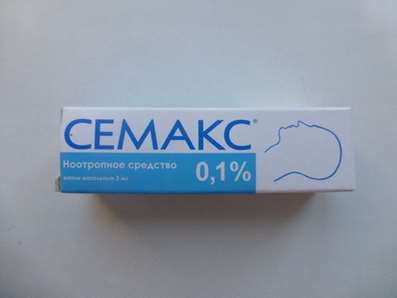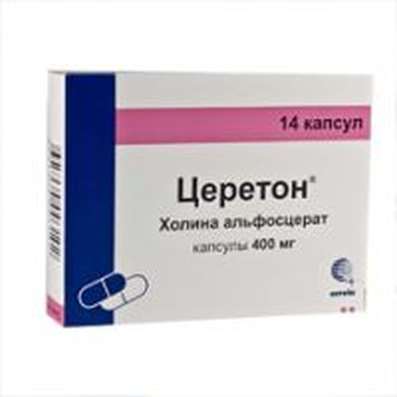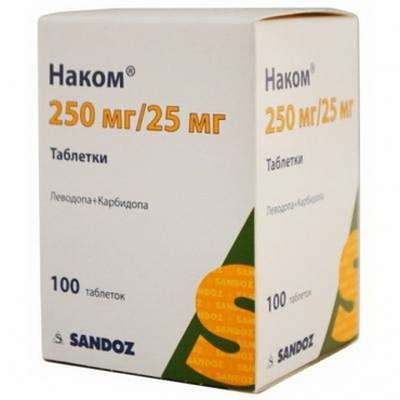Instruction for use: Diclofenac + Lansoprazole (Diclophenacum + Lansoprazolum)
I want this, give me price
Pharmacological groups
NSAIDs - Acetic acid derivatives and related compounds in combinations
Proton pump inhibitors in combinations
Nosological classification (ICD-10)
M06.4 Inflammatory polyarthropathy
Inflammatory-degenerative diseases of the musculoskeletal system
M06.9 Other specified rheumatoid arthritis
Rheumatoid arthritis,Pain syndrome in rheumatic diseases, Pain in rheumatoid arthritis, Inflammation in rheumatoid arthritis, Degenerative forms of rheumatoid arthritis, Children's rheumatoid arthritis, Exacerbation of rheumatoid arthritis, Acute articular rheumatism, Rheumatic arthritis, Rheumatic polyarthritis, Rheumatoid arthritis, Rheumatic polyarthritis, Rheumatoid arthritis, Rheumatoid arthritis of active course, Rheumatoid arthritis, Rheumatoid polyarthritis, Acute rheumatoid arthritis, Acute rheumatism
M07.3 Other psoriatic arthropathies (L40.5 +)
Arthritis psoriatic, The generalized form of psoriatic arthritis, Psoriatic arthritis
M08 Juvenile [juvenile] Arthritis
Juvenile arthritis, Juvenile chronic polyarthritis, Juvenile chronic arthritis, Juvenile rheumatoid arthritis, Arthritis juvenile chronic
M10.9 Gout, unspecified
Arthritis Gouty, Acute gouty arthritis, Acute attack of gout, Gouty Arthritis, Articular syndrome with exacerbation of gout, Articular syndrome with gout, Urarturia, Chronic arthritic arthritis, Acute gout, Salt diathesis
M19 Other arthrosis
M35.3 Rheumatic polymyalgia
Pseudoarthritis rhizomelic, Rheumatic polymyalgia, Pain syndrome in rheumatic diseases, Muscle pain with rheumatism, Extra-articular rheumatism, Extra-articular rheumatic syndrome, Extra-articular rheumatic diseases, Extra-articular rheumatic soft tissue injury, Extra-articular forms of rheumatism, Rheumatic soft tissue damage, Rheumatism of soft tissues, Rheumatic diseases of soft tissues, Rheumatic diseases of the periarticular soft tissues, Rheumatic affections of soft tissues, Rheumatic collagen diseases
M45 Ankylosing spondylitis
Ankylosing spondylarthrosis, Marie-Strumpel disease, Ankylosing spondylitis, Pain syndrome in acute inflammatory diseases of the musculoskeletal system, Pain syndrome in chronic inflammatory diseases of the musculoskeletal system, Bechterew's disease, Ankylosing spondylitis, Diseases of the spinal column, Rheumatic spondylitis, Bechterew-Marie-Strumpel disease
M54.1 Radiculopathy
Acute sciatica, Radiculopathy, Radiculitis, Radiculitis with radicular syndrome, Acute radiculopathy, Pain syndrome with radiculitis, Subacute radiculitis, Radiculitis, Chronic radiculitis, Diseases of the spinal column
M54.9 Dorsalgia, unspecified
Pain syndrome with radiculitis, Pain syndrome in the back,Pain with radiculitis, Degenerative changes in the spine, Degenerative and dystrophic disease of the spine and joints, Degenerative disease of the spine, Osteoarthrosis of the spine, Painful lesions of the spine
M65 Synovitis and tendosynovitis
Acute tenosynovitis, Tendovaginitis (tenovaginitis), Tendosinovit (tenosynovitis), Tendovaginitis, Osteoarthritis in musculo-articular diseases, Inflammatory disease of soft tissues, Nonspecific tenosynovitis, Tendosinovit
M71 Other bursopathies
Bursitis, Bursopathy, Diseases of soft tissues, Osteoarthritis in musculo-articular diseases, Inflammatory disease of soft tissues, Subacute bursitis
M95.8 Other specified musculoskeletal deformities
Degenerative and dystrophic disease of the musculoskeletal system ,Degenerative disease of the musculoskeletal system, Obmenno-dystrophic diseases of the musculoskeletal system
Pharmacology
Pharmacological action - anti-inflammatory, antipyretic, analgesic, antiulcer, antiplatelet.
Diclofenac - NSAIDs (non-steroidal anti-inflammatory drugs), a derivative of phenylacetic acid. Has anti-inflammatory, analgesic, antipyretic and antiplatelet effect. By indiscriminately inhibiting COX (cyclooxygenase) -1 and -2, it breaks the metabolism of arachidonic acid, reduces the amount of PG (prostaglandins) in the inflammation focus, suppresses the exudative and proliferative phases of inflammation. In rheumatic diseases, the anti-inflammatory and analgesic effect of diclofenac significantly reduces the severity of pain, morning stiffness, swelling of the joints, which improves the joint condition.
Lansoprazole is an inhibitor of the proton pump. Does not show anticholinergic or antihistaminic properties, binds specifically to H + / K + - ATPase (also called proton pump) on the secretory surface of parietal cells of the stomach and prevents the final stage of hydrochloric acid secretion.
Lansoprazole reduces basal, day and night secretion of hydrochloric acid, prevents food-stimulated secretion and increased secretion caused by other factors, such as gastrin and pentagastrin, and also prevents insulin-induced increase in the volume and acidity of gastric juice. Reduces the acidity of gastric juice and the length of time during which the pH value> 4. The effect is proportional to the dose value.
After stopping therapy with lansoprazole, the pH of the gastric juice decreases gradually and returns to normal within 2-4 days. There were no cases of a significant increase in the secretion of hydrochloric acid after discontinuation of treatment.
Lansoprazole increases the activity of pepsinogen in the serum and lowers the activity of pepsin below the basal values after stimulation with food.
During treatment with lansoprazole, the average activity of gastrin in the serum increases 1.5-2 times. Concentration rises during the first 8 weeks of treatment, after which it reaches a plateau and at the end of therapy after 4 weeks returns to the initial values.
Pharmacokinetics
Diclofenac
Absorption. Absorption is fast and complete, food slows down the absorption rate. Cmax is noted 30-60 minutes after ingestion. The concentration in the blood plasma is linear depending on the amount of oral dose. The change in the pharmacokinetics of diclofenac against a background of repeated use is not noted. Bioavailability - 50%.
Distribution. Do not cumulate while respecting the recommended interval between doses. The connection with plasma proteins is more than 99% (most of it is associated with albumins).
Metabolism. 50% is metabolized during the first passage through the liver. Metabolism occurs as a result of multiple or one-time hydroxylation and conjugation with glucuronic acid. The isoenzyme CYP2C9 also participates in the metabolism of diclofenac. The pharmacological activity of metabolites is lower than that of diclofenac.
Elimination. Systemic clearance is 260 ml / min. T1 / 2 from the blood plasma - 2 hours. Excretion from the synovial fluid is slower than from the plasma.
70% of the administered dose is excreted as metabolites through the kidneys; less than 1% is unchanged, the rest of the dose is excreted as metabolites with bile. In patients with severe renal dysfunction, excretion of metabolites with bile is increased, while an increase in their concentration in the blood is not observed. In patients with chronic hepatitis or compensated liver cirrhosis, pharmacokinetic parameters are the same as in patients without liver disease. Diclofenac penetrates into breast milk.
Lansoprazole
Absorption. Absorption is high, bioavailability is 80%. Food intake reduces absorption and bioavailability (by 50%), but the inhibitory effect on gastric secretion remains the same, regardless of food intake. Time to achieve Cmax (0.75-1.15 mg / l) - 1.7 hours Cmax in plasma and AUC are approximately proportional to the dose taken.
Distribution. Cumulation does not occur. The connection with plasma proteins is 97%. Good penetrates into tissues, incl. in the lining cells of the gastric mucosa. Vd - 0,5 l / kg.
Metabolism. It is actively metabolized at the first passage through the liver with the participation of the CYP2C19 isoenzyme with the formation of sulfonyl, sulfone and hydroxy derivatives. Inhibits the activity of CYP2C19.
Elimination. T1 / 2 lansoprazole less than 2 hours and does not reflect the duration of gastric secretion inhibition. If there is a violation of liver function, T1 / 2 increases 3-4 times. Lansoprazole is excreted as metabolites; approximately one third of lansoprazole is excreted by the kidneys and two-thirds - with bile through the intestine (renal failure is not significantly affected by the rate of excretion).
Symptomatic therapy of inflammatory and degenerative diseases of the musculoskeletal system in patients with the risk of developing gastric ulcers and / or duodenal ulcers associated with NSAID: rheumatoid arthritis, psoriatic arthritis, juvenile chronic arthritis, ankylosing spondylitis (Bekhterev's disease); gouty arthritis, rheumatic soft tissue damage, osteoarthritis of peripheral joints and spine, incl. with radicular syndrome, tendovaginitis, bursitis.
Contraindications
Hypersensitivity (including to other NSAIDs); complete or incomplete combination of bronchial asthma, recurrent polyposis of the mucous membrane of the nasal cavity, paranasal sinuses and intolerance to acetylsalicylic acid or other NSAIDs (including in the anamnesis); inflammatory bowel disease (ulcerative colitis, Crohn's disease) in the phase of exacerbation; condition after aortocoronary bypass surgery; active gastrointestinal bleeding; pregnancy, the period of breastfeeding; heart failure in the stage of decompensation; violation of hematopoiesis, violation of hemostasis (including hemophilia); severe hepatic impairment or active liver disease; renal failure (Cl creatinine less than 30 ml / min), progressive kidney disease, hyperkalemia; deficiency of sugar / isomaltase, intolerance to fructose, glucose-galactose malabsorption; children's age till 18 years.
Restrictions on the use
Erosive-ulcerative lesions of the mucous membrane of the stomach or duodenum (diclofenac applied only in case of careful evaluation of the need for use, at a dose of not more than 75 mg / day), malignant neoplasms of the gastrointestinal tract. Anamnestic data on the presence of gastrointestinal ulcer, the presence of Helicobacter pylori infection, advanced age, long-term use of NSAIDs, alcoholism, severe physical illnesses.
Anemia, bronchial asthma, cerebrovascular disease, coronary heart disease, chronic heart failure, arterial hypertension, peripheral arterial disease, edematous syndrome, hepatic and / or renal insufficiency (creatinine Cl 30-60 ml / min), history of liver disease, dyslipidemia / hyperlipidemia, diabetes mellitus, smoking, inflammatory bowel disease, a significant decrease in BCC (including after extensive surgery), induced porphyria, diverticulitis, systemic diseases connective tissue.
Simultaneous administration of GCS (glucocorticosteroids) (eg prednisolone), anticoagulants (eg warfarin), antiaggregants (eg acetylsalicylic acid, clopidogrel), SSRIs (selective serotonin reuptake inhibitors) (eg citalopram, fluoxetine, paroxetine, sertraline).
Application in pregnancy and lactation
Contraindicated during pregnancy and during breastfeeding.
Side effects of substances Diclofenac + Lansoprazole
Classification of the incidence of adverse events recommended by WHO:
very often (from ≥1 / 10); often (from ≥1 / 100 to <1/10); infrequently (from ≥1 / 1000 to <1/100); rarely (from ≥1 / 10000 to <1/1000); very rarely (from <1/10000); frequency is unknown (can not be estimated from available data).
Diclofenac
From the digestive system: often - epigastric pain, nausea, vomiting, diarrhea, dyspepsia, flatulence, anorexia, increased activity of aminotransferases; rarely - gastritis, proctitis, bleeding from the digestive tract (vomiting with blood, melena, diarrhea with a trace of blood), gastrointestinal ulcers (with or without bleeding or perforation), hepatitis, jaundice, dysfunction of the liver; very rarely - stomatitis, glossitis, esophagitis, nonspecific hemorrhagic colitis, exacerbation of ulcerative colitis or Crohn's disease, constipation, pancreatitis, fulminant hepatitis.
From the nervous system: often - headache, dizziness; rarely - drowsiness; very rarely - a violation of sensitivity (including paresthesia), memory disorders, tremors, convulsions, anxiety, cerebrovascular disorders, aseptic meningitis, disorientation, depression, insomnia, nightmares, irritability, mental disorders.
From the senses: often - vertigo; very rarely - visual impairment (blurred vision, diplopia), hearing impairment, tinnitus, a violation of taste sensations.
From the urinary system: very rarely - acute renal failure, hematuria, proteinuria, interstitial nephritis, nephrotic syndrome, papillary necrosis.
From the hematopoiesis: very rarely - thrombocytopenia, leukopenia, hemolytic and aplastic anemia, agranulocytosis.
Allergic reactions: very rarely: angioedema (including faces), anaphylactic / anaphylactoid reactions, including a marked decrease in blood pressure (BP) and shock.
From the CCC (cardiovascular system): very rarely - palpitations, chest pain, increased blood pressure, vasculitis, heart failure, myocardial infarction.
On the part of the respiratory system: rarely - cough, pharyngitis, rhinitis, upper respiratory tract infection, flu-like syndrome.
From the hemopoietic system: very rarely - leukopenia, thrombocytopenia, eosinophilia, pancytopenia or agranulocytosis.
Allergic reactions: rarely - hives, angioedema, photosensitivity; very rarely - anaphylactic reactions.
Disorders of metabolism and nutrition: rarely - anorexia, increased appetite.
From the sense organs: very rarely - visual impairment (blurred vision), tinnitus.
On the part of the skin: often - skin rash; rarely - purpura, petechiae, hair loss; very rarely - toxic epidermal necrolysis, Stevens-Johnson syndrome, erythema multiforme.
From the side of the musculoskeletal system: rarely - pain in the joints, muscles and bones.
From the genitourinary system: infrequently - increasing the concentration of creatinine; very rarely - interstitial nephritis, renal failure, urogenital disorders, impotence, gynecomastia.
Other: infrequent - a feeling of fatigue; very rarely - peripheral edema.
Interaction
Diclofenac
Simultaneous use of diclofenac:
- with lithium or digoxin - may increase their concentration in the blood plasma;
- with some diuretics - can reduce their diuretic effect;
- potassium-sparing diuretics - can cause hyperkalemia;
- Acetylsalicylic acid, GCS and other NSAIDs - increases the risk of side effects (bleeding in the gastrointestinal tract);
- cyclosporin - increases the nephrotoxicity of cyclosporine;
- Methotrexate - increases the toxicity of methotrexate;
- hypotensive drugs - reduces their effectiveness.
Reduces the effect of hypoglycemic agents.
Against the background of simultaneous use with anticoagulants, antiplatelet and thrombolytic drugs (alteplase, streptokinase, urokinase) increases the risk of bleeding (more gastrointestinal).
Reduces the effect of hypnotic drugs.
Acetylsalicylic acid reduces the concentration of diclofenac in the blood.
Paracetamol increases the risk of developing nephrotoxic effects of diclofenac. Cefamandol, cefoperazone, cefotetan, valproic acid and plikamycin increase the incidence of hypoprothrombinemia.
Gold preparations increase the effect of diclofenac on the synthesis of PG in the kidneys, which is manifested by increased nephrotoxicity.
SSRIs increase the risk of bleeding from the digestive tract.
Simultaneous use with ethanol, colchicine, corticotropin and preparations of St. John's wort increases the risk of bleeding in the gastrointestinal tract.
Drugs that cause photosensitivity, increase the sensitizing effect of diclofenac to UV (ultraviolet) radiation.
Drugs that block tubular secretion, increase the concentration of diclofenac in the blood plasma, thereby increasing its effectiveness and toxicity. Antibacterial drugs from the quinolone group increase the risk of seizures.
Lansoprazole
Lansoprazole lowers the acidity of the gastric juice, which can lead to a change in the absorption of certain substances, for example the bioavailability of ketoconazole, ampicillin esters and iron salts is reduced. The bioavailability of digoxin rises by approximately 10%, which is clinically insignificant for most patients. There may be interaction with drugs that are metabolized in the liver with the help of CYP3A and CYP2C19 isoenzymes. Thus, with the simultaneous use of lansoprazole and theophylline (the isozyme CYP3A participates in the metabolism), there was a moderate increase in the clearance of theophylline (10%). It is unlikely that this interaction is of clinical significance. However, in some patients, additional titration of the theophylline dose at the beginning and at the end of therapy with lansoprazole is required to achieve clinically effective concentrations of lansoprazole in the blood.
Lansoprazole has no clinically significant interaction with phenazone, diazepam, ibuprofen, phenytoin, indomethacin, clarithromycin, prednisolone, propranolol, terfenadine, or warfarin.
Lansoprazole can stimulate the secretion of theophylline (by 10%), but this effect is not clinically significant.
Since interaction with phenytoin, theophylline or warfarin may be significant in individual patients at risk, it is necessary to take drugs with caution.
Sucralfate and antacids can reduce the absorption of lansoprazole. Since the interaction is not clinically significant, patients may take sucralfate or antacids at least 30 minutes before taking lansoprazole or 1 hour after.
Overdose
Diclofenac
Symptoms: vomiting, bleeding from the gastrointestinal tract, pain in the epigastric region, diarrhea, dizziness, tinnitus, lethargy, convulsions; rarely - increased blood pressure, acute renal failure, hepatotoxic effect, respiratory depression, coma, melena, irritability.
Treatment: gastric lavage, reception of activated charcoal, symptomatic therapy aimed at eliminating the increase in blood pressure, impaired renal function, seizures, respiratory depression.
Forced diuresis, hemodialysis are ineffective (due to the significant connection with proteins and intensive metabolism). There is no specific antidote.
Lansoprazole
At present, no cases of an overdose of lansoprazole have been reported. In the case of high doses, medical supervision is indicated, if necessary, symptomatic therapy. Hemodialysis is ineffective
Routes of administration
Inside.
Precautions for Diclofenac + Lansoprazole
Prolonged use of diclofenac can very rarely cause serious undesirable effects on the part of the liver, which requires periodic monitoring of hepatic enzymes.
In infectious diseases, the anti-inflammatory and antipyretic effects of diclofenac should be taken into consideration, because they can lubricate the clinical picture of diseases.
When performing long-term therapy, it is necessary to monitor the picture of peripheral blood, the analysis of feces for latent blood.
In connection with the negative effect on fertility, women planning pregnancy, is not recommended.
Diclofenac should be used in elderly patients in a minimally effective dose.
Symptomatic improvement during therapy with lansoprazole does not exclude the possible development of neoplasms in the digestive tract. Care should be taken in the sudden occurrence or worsening of dyspeptic symptoms, especially in patients older than 45 years.
Cardiovascular and cerebrovascular effects
The use of diclofenac, especially in high doses (150 mg / day), may cause a slight increase in the risk of developing arterial thrombosis (eg, myocardial infarction or stroke).
Patients with uncontrolled hypertension, CHF, IHD, peripheral vascular lesions and / or cerebrovascular disorders should take diclofenac only after a thorough examination. A thorough examination should be performed before the onset of prolonged therapy in patients at risk of cardiovascular disease (hypertension, hyperlipidemia, diabetes, smoking).
It is not recommended simultaneous use of lansoprazole and atazanavir.
Before and after treatment, endoscopic control is necessary to exclude malignant neoplasm, because treatment can mask symptoms and delay correct diagnosis. Patients taking lansoprazole may develop ulcerative colitis.
Influence on the ability to drive vehicles and other technical devices. Care must be taken when driving vehicles and other activities that require a high concentration of attention and speed of psychomotor reactions.

 Cart
Cart





